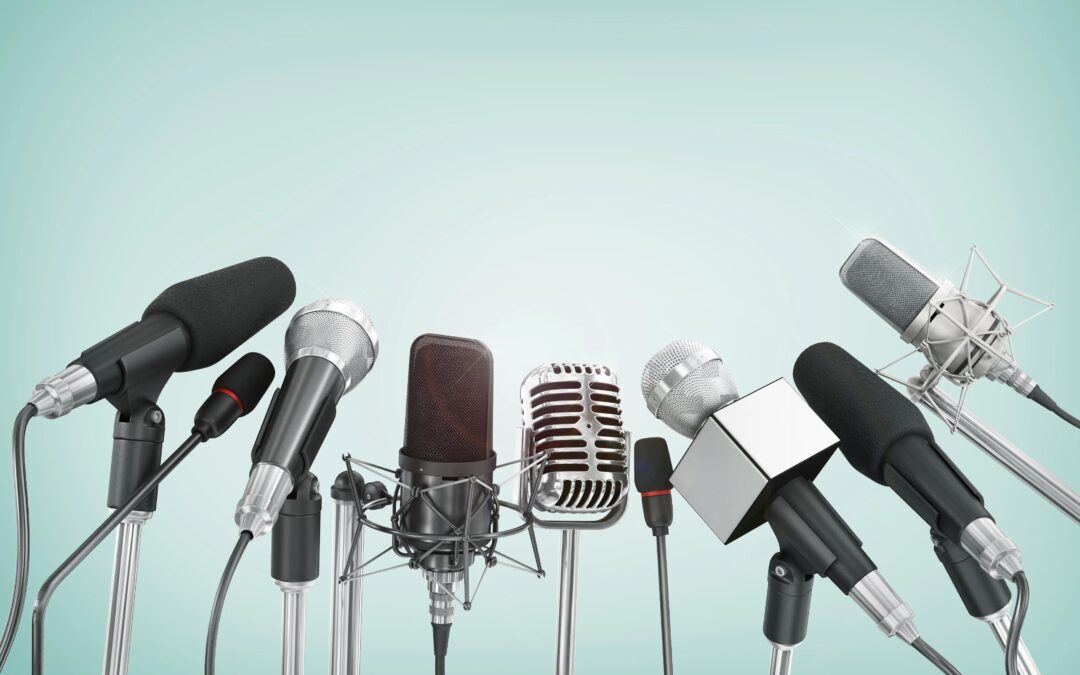Understanding microphones can be complicated but this ultimate guide breaks it down concisely. From dynamic to condenser microphones, learn the basics to make informed choices.
If you’re a musician, podcaster, or content creator, it’s essential to have basic knowledge about microphones. With so many varieties available, understanding their differences and uses can get overwhelming. Fortunately, we’ve got you covered in this ultimate guide. We’ll cover the most common types of microphones, their components, and what to consider when buying one.
Understanding microphones’ technical aspects and characteristics is vital to choosing the right one for your purpose. We’ll help you make informed choices about the microphone that best suits your needs. Whether you’re a beginner or a pro, this ultimate guide will pave the way for better-quality recordings and performances.
Types Of Microphones
Microphones are an essential part of any recording setup and understanding the types of microphones will help you choose the best microphone for your specific application. There are three main types of microphones: dynamic microphones, condenser microphones, and ribbon microphones.
Dynamic Microphones
Dynamic Microphones are the most commonly used microphones. They are also known as moving-coil microphones because they use a small coil of wire that moves within a magnetic field to produce sound. Dynamic microphones are rugged and can handle high sound pressure levels, making them ideal for loud sources like guitar amps and drums. They are also less sensitive than some other types of microphones, meaning that they pick up less background noise. Dynamic microphones are typically less expensive than other types of microphones and are a great choice for beginners.
Condenser Microphones
Condenser microphones use a thin diaphragm made of plastic or metal coated with a conductive material to capture sound. They require an external power source such as phantom power or a battery to operate. Condenser microphones are more sensitive and can capture more detail than dynamic microphones, making them ideal for recording vocals and acoustic instruments. They are also more expensive and fragile than dynamic microphones, but their high-quality sound is worth the investment.
Ribbon Microphones
Ribbon microphones use a thin strip of metal suspended between two magnets to capture sound. They are the most fragile of all microphone types and need to be handled with care. They are also very expensive and require a preamp with a high gain to work properly. Ribbon microphones have a warm and natural sound, making them great for recording delicate instruments like strings and woodwinds.
Understanding the different types of microphones is essential to make the best recording decisions. Depending on your recording goals and budget, you may consider a dynamic, condenser, or ribbon microphone.

Credit: mixandmastermysong.com
Polar Patterns
Polar patterns refer to the sensitivity of microphones to sounds coming from different directions. Understanding polar patterns is crucial for selecting the right microphone for a specific application, and achieving optimal sound quality. This guide provides an in-depth analysis of various types of polar patterns commonly used in microphones, including cardioid, omnidirectional, and bidirectional.
Polar Patterns: When it comes to understanding microphones, one of the most important concepts to grasp is polar patterns. A polar pattern is the three-dimensional space around a microphone where it can pick up sound. There are various types of polar patterns, but the three most common are cardioid, omnidirectional, and bidirectional. Each pattern has a unique set of features that make it suitable for different recording scenarios. H3: Cardioid Cardioid microphones are incredibly versatile and feature a heart-shaped pattern with maximum sensitivity at the front of the microphone and limited sensitivity at the back. This makes them perfect for recording a single sound source while rejecting any unwanted background noise. Cardioid microphones are ideal for studio recording, podcasting, and live sound reinforcement. H3: Omnidirectional An omnidirectional microphone is designed to pick up sound equally from all directions, making them suitable for recording ambient sounds such as crowd noise, nature sounds, and room acoustics. They are also suitable for recording group performances, interviews, and conferences. H3: Bidirectional Bidirectional microphones, also known as figure-of-eight microphones, pick up sound from the front and back of the microphone but reject sound from the sides. They are suitable for recording dialogue between two people facing each other or for capturing the ambience of a room from opposite ends. Bidirectional microphones are also popular for recording musical duets or interviews. In conclusion, understanding polar patterns is crucial to selecting the right microphone for any recording situation. Each polar pattern has its unique advantages, and choosing the right one will ultimately impact the quality of the recording.
Choosing The Right Microphone
Selecting the right microphone is crucial in any recording process. Whether you’re a seasoned professional or just starting out, understanding the functionality and various types of microphones available is vital to achieving high-quality sound output. Our ultimate guide to understanding microphones will equip you with the necessary knowledge to choose the best microphone for your recording needs.
When it comes to recording audio, choosing the right microphone can make a huge difference in the sound quality of your recordings. With so many different types of microphones available, it can be overwhelming to know which one to choose. In this section, we will explore three main types of microphones: Vocal Microphones, Instrument Microphones, and Studio Microphones.
Vocal Microphones
Vocal microphones are designed to capture the human voice and are commonly used for live performances, podcasts, and vocal recordings. The two main types of vocal microphones are dynamic and condenser microphones. Dynamic microphones are durable and can handle high sound pressure levels, making them a popular choice for live performances. Condenser microphones, on the other hand, are more sensitive and capture a wider range of frequencies, making them a better choice for studio recordings.
Instrument Microphones
Instrument microphones are designed to capture the sound of musical instruments. There are many different types of instrument microphones, each designed for a specific instrument. For example, a microphone designed for a guitar may not be suitable for a drum kit. Some common instrument microphones include drum mics, guitar mics, and bass mics.
Studio Microphones
Studio microphones are versatile and can be used to record both vocals and instruments. They are typically more sensitive and are designed to capture a wider range of frequencies than other types of microphones. Studio microphones are often large-diaphragm condenser microphones, which use a larger diaphragm to capture more sound and are well-suited for recording in a controlled studio environment. Choosing the right microphone can be a challenge, but understanding the different types of microphones and their uses can help you make an informed decision. Whether you are recording vocals or instruments, there is a microphone that can meet your needs and deliver high-quality sound.

Credit: reads.alibaba.com
Microphone Techniques
From dynamic to condenser, ribbon to lavalier, understanding microphone types and techniques is crucial for high-quality recording. Learn to master microphone placement, gain structure, and other tips with this ultimate guide to improve your audio recordings.
As a content creator or a musician, one of the essential tools in your arsenal is a microphone. However, getting quality sound with a microphone is not simply about pointing it at the direction of the sound source and pressing record. Utilizing various microphone techniques is crucial to achieving the best sound quality possible. Here are some microphone techniques you should know:
Proximity Effect
What is Proximity Effect? The proximity effect refers to an increase in low-frequency response as you get closer to the microphone. This effect can be used to increase the perceived bass response of a voice or an instrument. It can also be used to bring out the warmth and depth of a voice. How to Use Proximity Effect? To utilize the proximity effect positively, place the microphone closer to the sound source. You can experiment with different distances to achieve different tonal qualities. For example, positioning the microphone approximately 6 inches from the sound source gives a neutral tone, while positioning it at 1-2 inches gives a bass-enhanced tone.
Off-axis Rejection
What is Off-Axis Rejection? Off-axis rejection refers to the ability of a mic to reject sound that comes from directions different than where it is aimed. A microphone with a high off-axis rejection minimizes background noise and other unwanted sounds. How to Use Off-Axis Rejection? To use off-axis rejection, aim the microphone directly at the sound source. Avoid pointing it towards reflective surfaces or other sources of unwanted sounds. Also, to minimize off-axis sound, place your mouth or instrument close to the microphone and speak or play directly into it.
Plosives
What are Plosives? Plosives are explosive consonant sounds like “P,” “B,” and “T” that produce a burst of air when pronounced, causing pops or distortion in the microphone sound. How to Minimize Plosives? To minimize plosives, use a pop filter. A pop filter is a mesh or foam shield that sits between the microphone and the sound source, breaking up the burst of air before it hits the microphone. You can also avoid speaking or singing directly into the microphone or positioning it slightly to the side of your mouth. In conclusion, using the right microphone techniques can go a long way in improving your sound quality. Use proximity effect to bring warmth and depth to your recording, off-axis rejection to reduce unwanted sounds, and pop filter to avoid plosives.
Frequently Asked Questions Of The Ultimate Guide To Understanding Microphones
What Is The Microphone 3 To 1 Rule?
The microphone 3 to 1 rule refers to the recommended distance between a speaker and microphone. The microphone should be positioned three times the distance from the speaker than the distance between two speakers, with the goal of reducing any echo or feedback.
This rule is commonly used in live sound engineering.
What Are The Basics Of Microphones?
Microphones are devices that convert sound waves into electrical signals. They have three basic components: a diaphragm, which vibrates in response to sound waves; a magnet, which produces a magnetic field around the diaphragm; and a coil, which converts the movement of the diaphragm into an electrical signal.
Different types of microphones have varying sound pickup patterns, sensitivity levels, and frequency responses.
What Are The 4 Characteristics Of Every Microphone?
The four characteristics of every microphone are sensitivity, frequency response, directional pattern, and self-noise. Sensitivity refers to how well a microphone can pick up sound, while frequency response measures the range of frequencies a microphone can detect. Directional pattern refers to how a microphone captures sound from different angles, while self-noise is the amount of noise a microphone produces.
What Is A Good Db For A Mic?
A good microphone DB requires a preamp to boost the low audio signal to line level so that it can be recorded or amplified further. The dB range you need depends on what you plan to record. However, a standard microphone DB level is about -60 dB.
Conclusion
To sum it up, understanding microphones can be a daunting task for beginners, but it is essential for recording studio professionals, musicians, podcasters, and YouTubers. We hope this guide was helpful in getting you acquainted with the types of microphones, their features, and usage scenarios.
Keep experimenting and exploring different recording techniques to enhance the quality of your audio recordings. Remember, the right microphone is the key to capturing a crystal-clear sound. Happy recording!